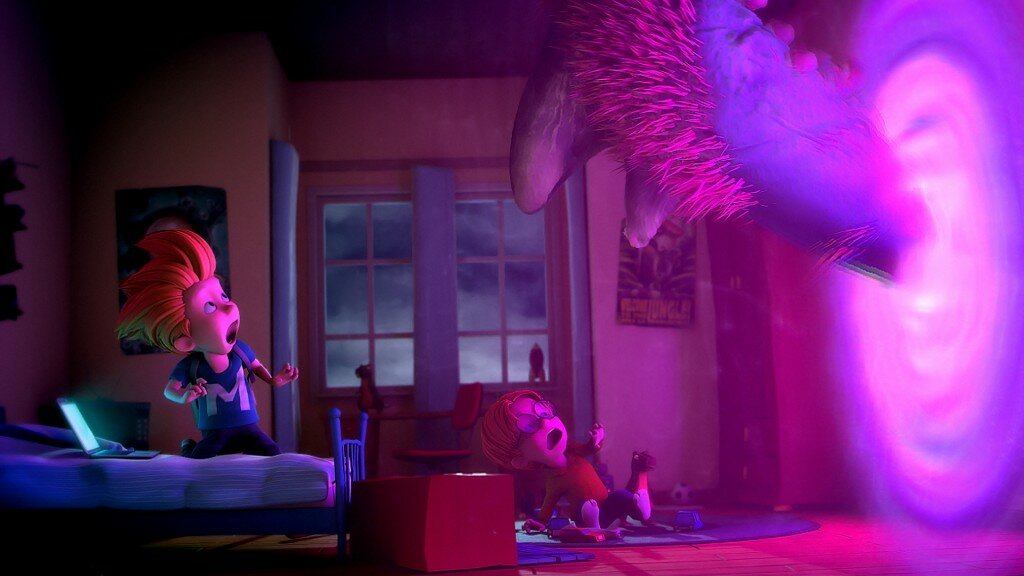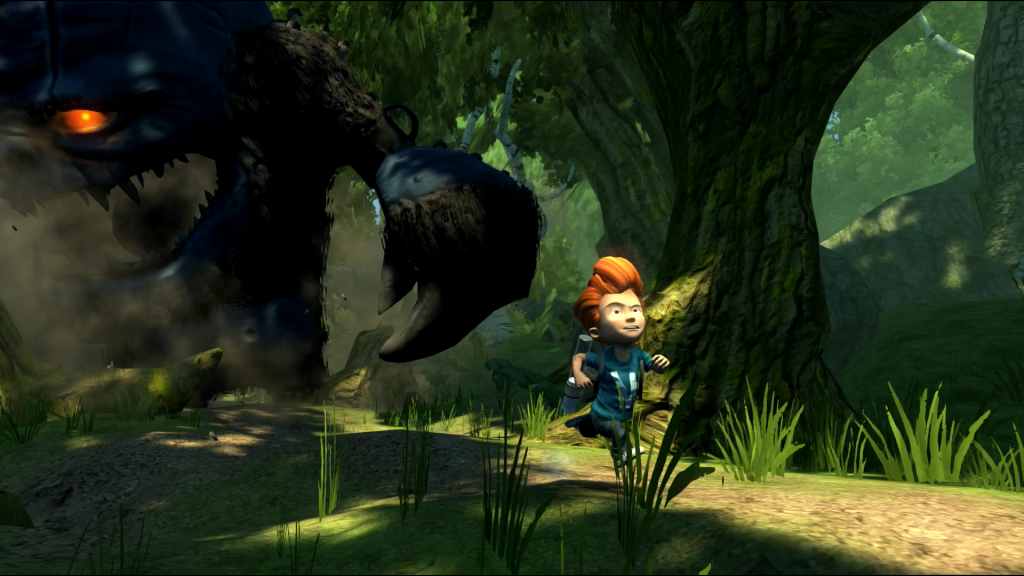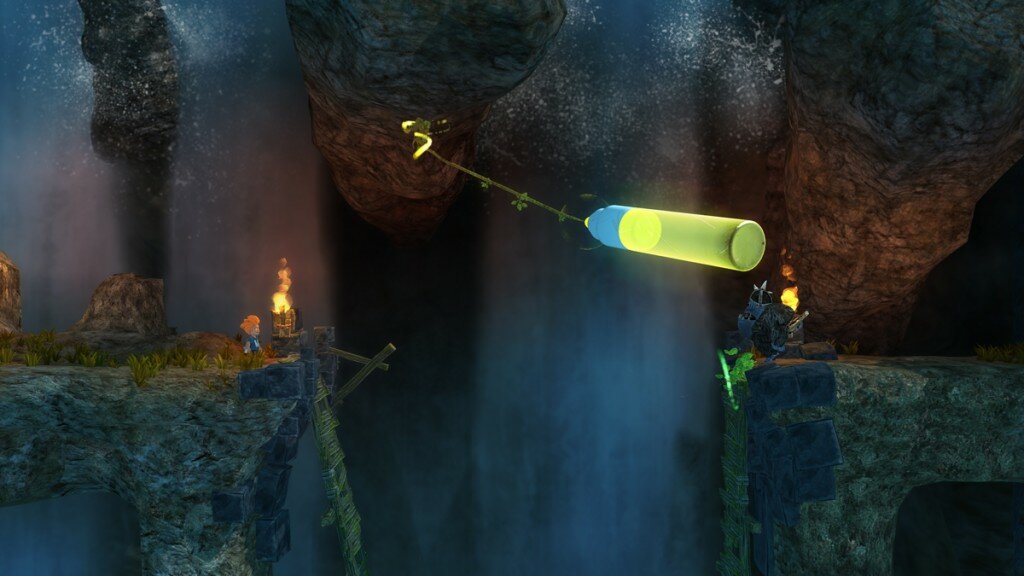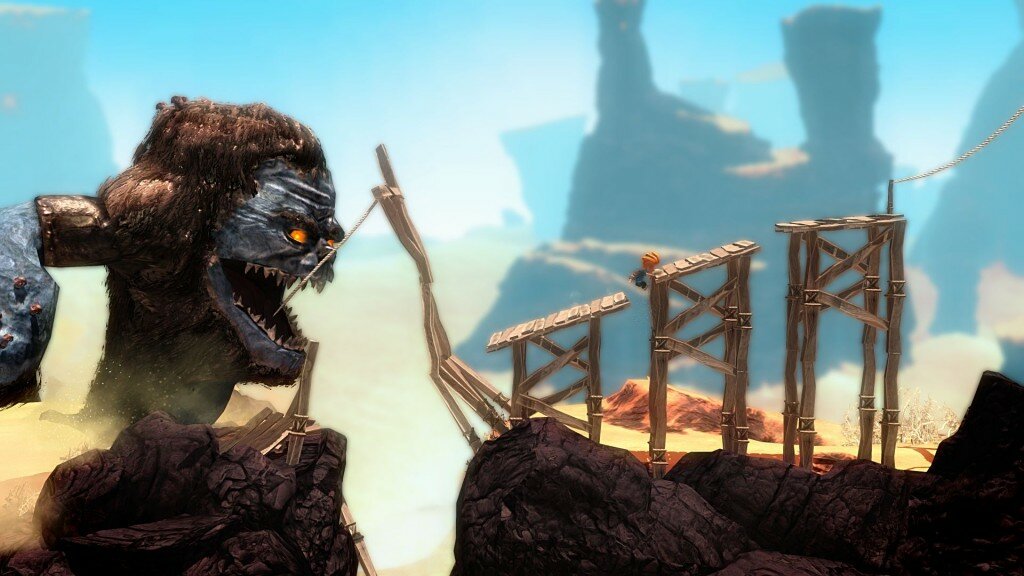Siblings are a royal pain in the arse. Love them or loathe them, at some point in your life you will have no doubt wished that you had the power to banish them to some other dimension so they can no longer come into your room and mess with your stuff.
According to Max: The Curse of Brotherhood, the new 2.5D puzzle platformer from Danish developers Press Play, this power is now only a simple internet search away. What a marvellous age we live in! After coming home to find his brother Felix smashing up his toys and generally being an obnoxious little bother, Max, in a fit of frustration, looks up an incantation to have his brother taken away by monsters. The problem is that rather than just spooking his little bro into leaving, the damn thing actually works and Felix is dragged screaming through a magical portal by a clawed hand belonging to a rather hungry looking monster

Realising that his parents will no doubt be pissed by this odd turn of events, Max grabs his Magic marker pen and dives through the portal after him.
Thus begins Max’s adventure to save his brother from the crazy Lord Mustacho and his band of monstrous minions. Although, once the game starts proper, the story elements become incredibly light, just the occasional cut scene reminding us that Felix is in peril so that we know why Max continues to press onwards.
However, the lack of compelling narrative is more than made up for by the quality of most of the game’s other major elements.
I was a little curious to see how big a difference there was between the Xbox 360 and Xbox one versions of the game, the good news is that it looks fantastic regardless of what platform you choose play it on and is easily one of the best looking arcade games on either console. Although the game has had a minor visual downgrade on the Xbox 360 you would be hard pressed to see the difference unless the two were running side by side.

The game’s character designs are particularly impressive. Each intricately designed character breathes life into an already vibrant world. Max in particular looks like a character from a Pixar movie and the huge array of weird and wonderful beasties are reminiscent of the creatures from Jim Henson’s The Labyrinth.
Each of the games twenty levels is lovingly crafted with wide, colourful strokes that make the gameworld feel almost palpable at times. Featuring everything from barren desserts, to lush jungles, fiery volcanoes and dark caves. Each new area is crammed with beautiful new vistas and devious new environmental puzzles to solve.
Once again, Max uses a combination of basic platforming skills and his Magic marker to manipulate the world around him in order to progress from one area to the next. However, unlike the original Wiiware/ Windows Phone game that no bugger played, in The Curse of Brotherhood rather than just creating thick pen lines and shapes to traverse pits and act as counterweights, your marker now interacts with pre designated creation points that glow one of four different colours depending on what will be produced. Orange points create pillars of rock, dark green areas enables you to draw branches that Max can climb or use as a platform, light green points allow you to create vines to swing on and blue points allow you to create pillars of water that catapult max across chasms and round corners.

As you would expect, the puzzles are fairly simple to begin with, but the game does a good job of introducing mechanics and ideas at a steady pace, before you know it the game has you using multiple powers in conjunction with each other to solve all manner of problems. In one particularly clever section, you have to use a combination of vines and branches to protect Max from some rather vicious lightning bugs that electrocute him if they touch him.
However as the game’s puzzles get more complex, the game’s fiddly controls begin to be at odds with the otherwise tight puzzle design, demanding a level of precision that an analogue stick simply can’t provide. For example, at one point you have to use a vine to swing a branch on top of some rocks in order to create a platform to jump on. The problem is that it requires a level of dexterity and precision that is hard to achieve with a pad and, as a result, frustration and eventually boredom soon follow. Luckily, I got the bloody thing to work just before I decided to give up.
It seems weird though that it doesn’t feature the ability to use smart glass to control the marker as a touch screen is pretty much perfect for this kind of gameplay. As demonstrated by the previous game in the series, Max and The Magic Marker, being one of the best game on Windows Phone, If you’ve got one, it is well worth getting, especially considering it’s only 79p.

Breaking up the puzzles are some rather nice chase sequences that have Max running from a giant, hungry monster. These were vaguely reminiscent of auto runner games. Although once again the games slightly dodgy controls do occasionally spoil the fun as Max’s floaty jumping and sporadic inability to grab hold of ledge or hastily constructed vine mean that you’ll often have to restart these sections. Luckily though, the game is generous with its checkpoints so you’ll never have to do an entire section more than once.
Despite this minor gripe, Max: The Curse of Brotherhood is still a thoroughly entertaining and well constructed game with top notch production values, a charming cast of characters and fantastic pacing. Solving a particularly tricky puzzle or getting to the end of a troublesome platforming section is incredibly satisfying, and getting to the credits feels like a genuine accomplishment.
It might not be this year’s Limbo, but I would still recommend giving a whirl regardless of which platform you choose to play it on.
